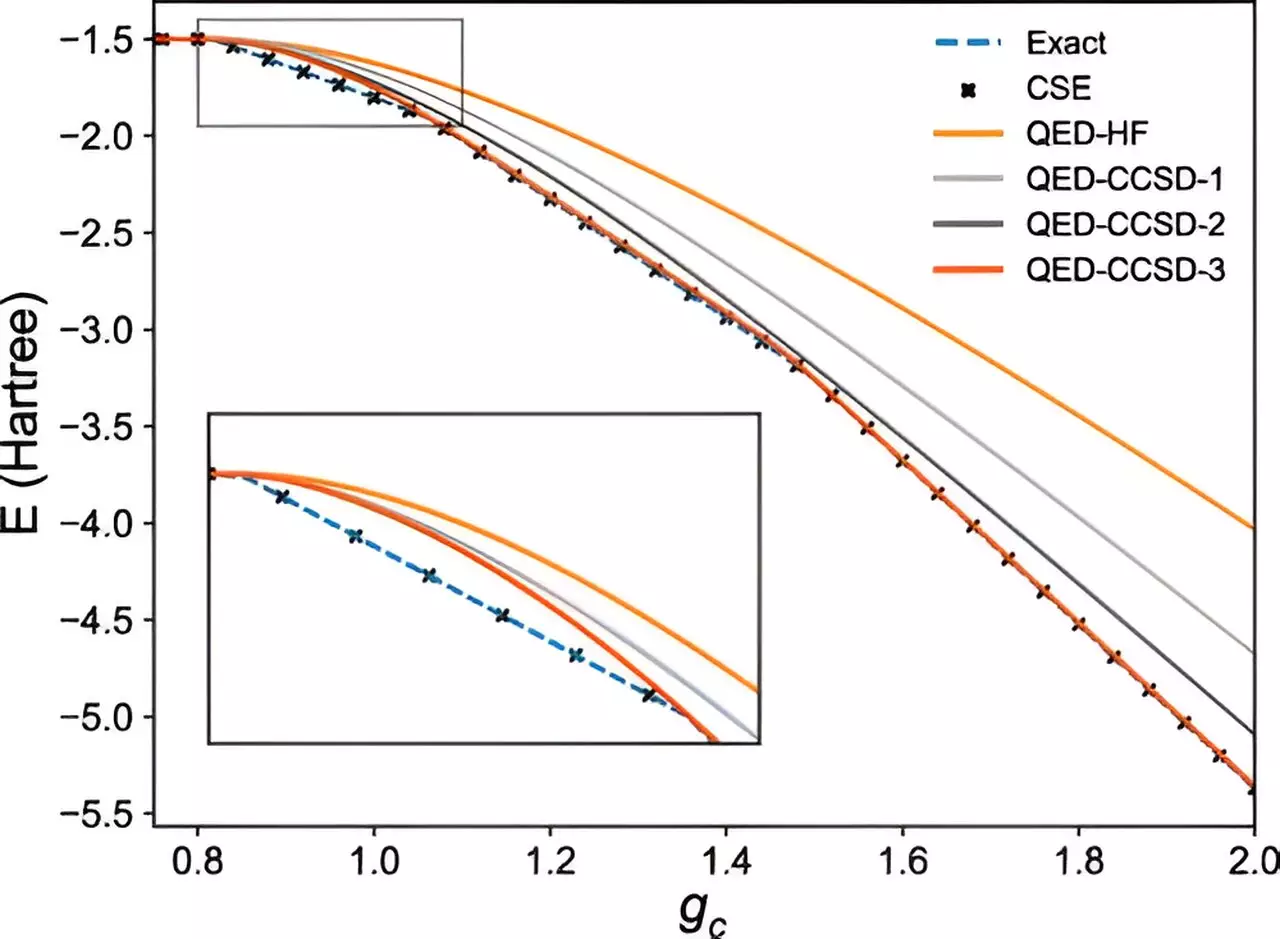The field of quantum chemistry is rapidly evolving, with researchers from the University of Trento and the University of Chicago proposing a generalized approach to understanding interactions between electrons and light. This groundbreaking study not only paves the way for the development of quantum technologies but also holds the promise of uncovering new states of matter with profound implications for various applications.
Understanding the intricate interplay between quantum particles is fundamental to the exploration of new molecules or materials that could revolutionize technological and medical advancements. When molecules or compounds interact with light, their physical properties undergo significant changes. This has given rise to the emerging field of polaritonic chemistry, which aims to initiate novel chemical reactions using light as a catalyst. By controlling light-matter interactions, researchers can manipulate and synthesize innovative quantum matter with transformative properties.
The study delves into the complexities of quantum systems involving multiple elements such as electrons, photons, and phonons. Calculating the wave function of such a system, which contains crucial physical information for predicting the behavior of diverse quantum particles, poses significant challenges. Researchers, led by Carlos Leonardo Benavides-Riveros and David A. Mazziotti, have tackled this challenge by developing a theoretical prescription, known as an “ansatz,” for predicting interactions in many-body quantum systems.
A key highlight of this study is the generalization of the ansatz to treat systems comprising different types of quantum particles, including electrons, photons, and phonons. By simulating a universal quantum algorithm on an IBM quantum computer with zero theoretical error, the researchers have demonstrated the efficacy of their approach. This groundbreaking achievement enables the generation of exponential prescriptions for many-body quantum systems, leading to the exact determination of wave functions on quantum devices.
The researchers emphasize that their universal approach offers new perspectives for studying the states of matter, particularly in quantum systems such as molecules and solids. By incorporating particles of light (photons) alongside electrons, the study sheds light on the structure of wave functions and the resulting physical properties. This holistic understanding of quantum systems opens up avenues for creating or suppressing fascinating properties when light interacts with matter.
The researchers highlight the potential of their ansatz in quantum computers, paving the way for modeling essential molecular problems in light-matter interactions. This breakthrough holds immense promise for applications in polaritonic chemistry and other domains where precise predictions of quantum behavior are paramount. As David A. Mazziotti aptly puts it, the advancement in quantum chemistry offers new possibilities for leveraging quantum computers to tackle complex molecular challenges and explore the vast potential of light-matter interactions.
The groundbreaking study by the University of Trento and the University of Chicago represents a significant advancement in quantum chemistry, offering a universal approach to understanding electron-light interactions. This research not only expands our knowledge of quantum systems but also opens up new possibilities for leveraging quantum technologies in diverse applications. With the potential to uncover novel states of matter and revolutionize molecular studies, this study sets a new standard for future research in the realm of quantum chemistry.


Leave a Reply